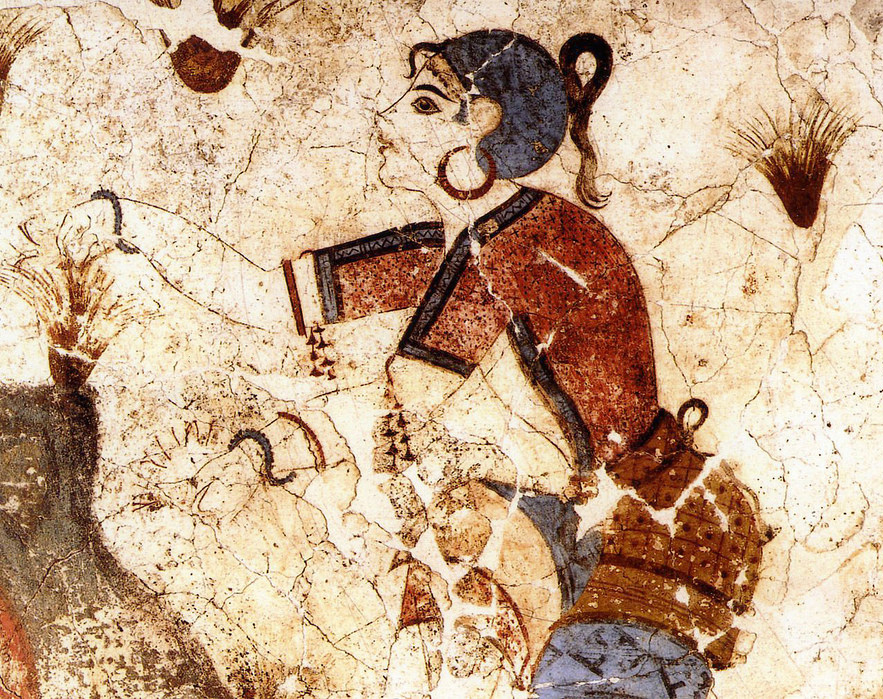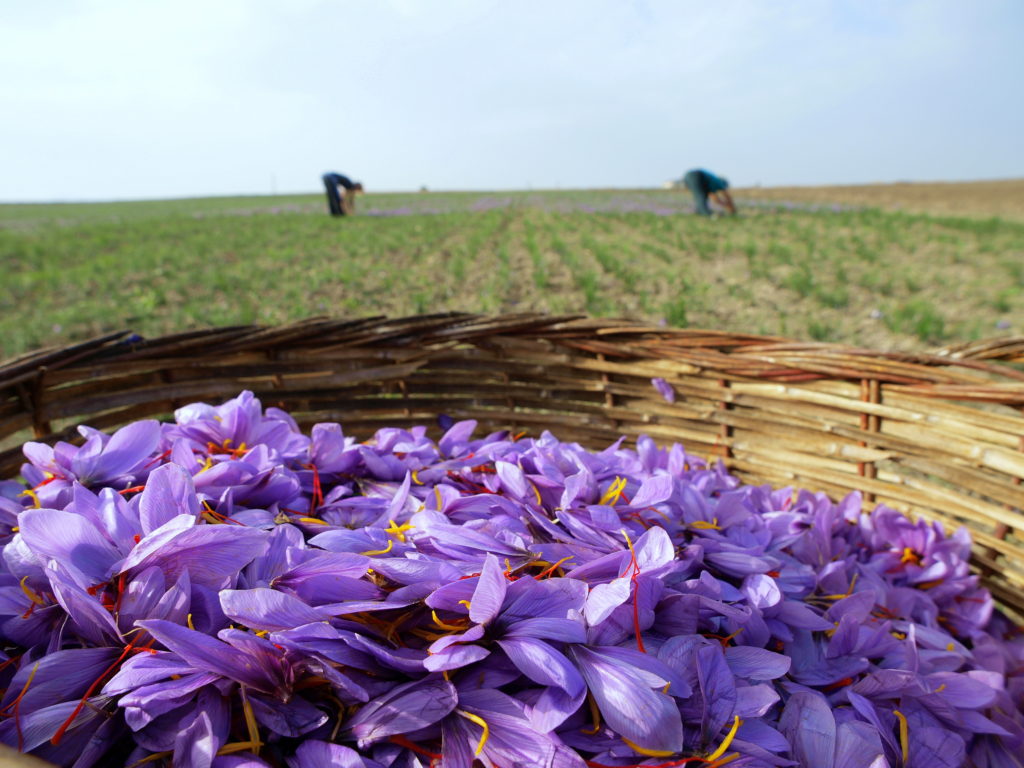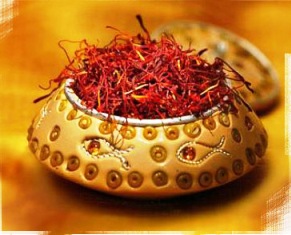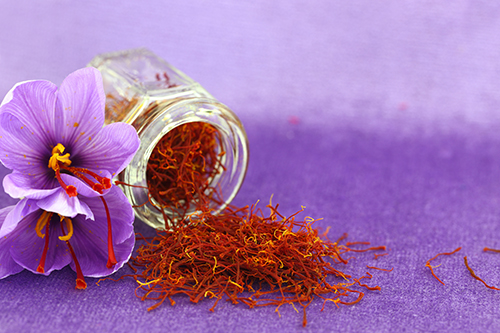“Your lips drop sweetness like honeycomb, my bride, syrup and milk are under your tongue, and your dress had the scent of Lebanon. Your cheeks are an orchard of pomegranates, an orchard full of rare fruits, spikenard and saffron, sweet cane and cinnamon.”
What substance was revered by the ancients, was used in Cleopatra’s baths to enhance her beauty and pleasure, was used to treat melancholy and a multitude of gastrointestinal ailments and fetched is weight in gold in Philadelphia markets when brought in by Pennsylvania “Dutch” farmers? The answer is, of course, the stamens from the Crocus sativus flower also known as saffron.

The earliest pictorial reference we have of saffron cultivation comes from the Minoan civilization on Akrotiri which has a number of frescoes of women cultivating the flowers and using them to treat various illnesses. The eruption of the Santorini volcano that destroyed their civilization provides the date of 1600-1500 BC as a fixed point in time for the cultivation of saffron by the Minoans. The cultivation and use of saffron is probably much older than that, however, because the flower that yields the precious spice hails from Southwest Asia. The Minoans likely came to saffron as a traded item from the east as part of their great network of sea and land traders that ranged the ancient Mediterranean.
Native to Southwest Asia, the Crocus species that produces the valuable reddish-orange hued stamens treasured by cooks around the world to color and flavor their dishes was created by men and women who used directed selection to breed a new species of flower with extremely long stamens. That this occurred some 20 centuries before the Common Era is worthy of a bow to the agricultural and commercial sophistication of the early civilizations involved in its use and trade.
The peoples of the Fertile Crescent used saffron as a pigment in cave paintings as early as 40,000 – 50,000 years BCE, and later the Sumerians used it medicinally in remedies and potions. By about 4000 years ago, the culinary use of saffron had begun, as witnessed in the early Hebrews revering it as a sweet-smelling spice in the words of the Song of Solomon. The first scientific documentation of saffron’s use was noted in an early botanical produced for Assyrian King Ashurbanipal seven centuries BCE.

Although it is unclear when the cultivation and trade of it began, Persian use of the flower as a dye, perfume and medicine was truly prolific and by the 10th Century BCE, there is evidence of mass cultivation at Derbena and Isfahan. By 500 BC, the Persians had spread cultivation of the saffron Crocus corms throughout the Persian Empire along Silk Road routes and cultivation in Northern India and Kashmir was formally underway.
How saffron reached China is a matter of debate. Some sources (the Bencao Gangmu) place its arrival as early in the 16th Century BCE and brought by Persian merchants along the Great Silk Road. Other sources attribute the arrival in China as later in the 3rd Century CE and attribute Kashmir as the source of the flower. It’s likely given the skew of time between the two documents that there were multiple introductions of the spice into China with the earliest coming in 1600 BCE or sometime before.

Saffron cultivation came to North America with the arrival of Anabaptists originally from Eastern and Central Europe who settled in the Susquehanna River Valley and later became known as the Pennsylvania “Dutch”. These settlers set up a profitable trade in saffron in the 1730s and 1740s with Spanish settlers in the Caribbean that earned its weight in gold for the saffron farmers. This trade persisted until the war of 1812 ruined the trade by the destruction of the American merchant vessels that had been used to ship the spice to the Caribbean.
So once again trade along the land and maritime routes of the Silk Road was instrumental in spreading the use of saffron throughout the ancient known world. From Fertile Crescent and Persian roots use of the herb for dyes, perfumes, medicine and culinary purposes spread first to Greece and other Mediterranean countries and then to the rest of Asia, Europe and North America. Highly valued as a drug and aphrodisiac and used by Alexander the Great to heal his battle wounds, saffron’s golden hues and rich blanket of gentle flavor has been used as an ingredient in wine, rice, curries and stews for millennia. It is a spice that has roots as old as human civilization and was an integral part of the early globalization brought about by the Great Silk Road. (Words by Laura Kelley)

